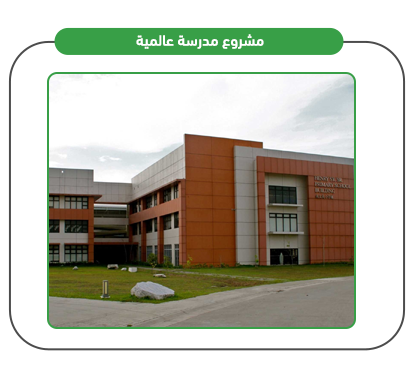Mashroo3k Economic Consulting Company offers a feasibility study for an international school project in Yemen, with the highest return on investment and the best payback period. This study is based on thorough studies of the Yemeni education sector, analysis of competitors’ strategies, and the provision of competitive services.

The International School Project provides educational services, as well as sports, cultural, and artistic skill development activities for boys and girls, both citizens and residents of Yemen, at all levels of education, in accordance with international educational quality standards and the latest curricula and teaching methods.
Mashroo3k Economic Consulting provides investors interested in investing in an international school project for various educational levels in Yemen with a set of specialized feasibility studies based on updated databases of the education sector in Yemen, analyzing its needs and requirements. This helps ensure the project’s success, achieves the highest return on investment, and provides the best payback period.

Mashroo3k Economic Consulting Company is committed to ensuring that your international school project includes the best human resources, the best modern educational equipment, and a team of social workers capable of facilitating communication between students, teachers, and parents.
Mashroo3k Economic Consulting Company advises investors interested in establishing an international school in Yemen, or developing existing projects, to seek the advice of specialized consultants through Mashroo3k Company, who will help them determine the best methods and approaches for developing the school’s services and enhancing its competitive advantages.


The project provides educational services up to the sixth grade of primary school.
Provides the best teachers in the field of education.
Management with the highest level of experience.
The project’s prices are competitive with competitors.
Payment facilities.
A comprehensive and strong advertising plan is in place.
Provides the best services for students and ensures a quality learning process.
Executive summary
Study project services/products
Market Size Analysis
Risk Assessment
Technical study
Financial study
Organizational and administrative study

Believing in the importance of the education sector and its role in localizing the national workforce, “Mashro3k” Consulting presents key indicators of the education sector in the GCC, encouraging investment in this vital field:
The total number of students in the early childhood development stage (nurseries and kindergartens) in the GCC reached 851.5 thousand, according to the latest statistics.
The number of students in school education stages in the GCC is approximately 9.3 million (79.4% in public schools and 20.6% in private schools).
Adult education centers have around 181,247 students enrolled.
Higher education institutions accommodate 2,206,446 students.
The number of early childhood education teachers is 50,647.
The number of school education teachers is 727,904.
There are 5,806 early childhood education institutions in operation.
The number of school education institutions is 32,310.
Over the past years, GCC governments have worked to bridge the gap between education and the job market by adopting curricula that focus on vocational and technical education and promoting modern learning technologies.
The GCC countries have also increased education spending and enhanced quality to ensure that graduates meet the private sector’s labor demands.
According to the latest statistics, the percentage of national budgets allocated to education in the GCC countries is as follows:
Saudi Arabia: 18.9%
United Arab Emirates: 14.8%
Oman: 12.2%
Bahrain: 9.8%
Kuwait: 12.3%
Qatar: 10.5%
By 2023, the private education market in the GCC is expected to reach $26.2 billion.
The global education services market was valued at $2,882.52 billion by the end of 2021.
Experts estimate that the market will reach $3,191.79 billion by the end of 2022, achieving a compound annual growth rate (CAGR) of 10.7%.
By 2026, the market is projected to grow to $4,623.90 billion, with a CAGR of 9.7% during the forecast period.

By 2030, the global value of education as an industry will reach US$10 trillion.
By 2024, the value of online education worldwide will reach US$247.46 billion.
The AI education market will expand at a compound annual growth rate of 36% from 2022 to 2030.
In 2000, the number of students worldwide was approximately 657 million, and this number increased to 739 million in 2019.
In 2000, the number of secondary school students was approximately 452 million, and this number increased to 601 million in 2019.